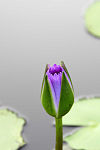| Revision as of 13:44, 29 September 2015 editFanwen619 (talk | contribs)231 edits →References← Previous edit | Revision as of 13:44, 29 September 2015 edit undoFanwen619 (talk | contribs)231 edits →GalleryNext edit → | ||
| Line 26: | Line 26: | ||
| Nymphaea capensis (12) 1200.jpg | Nymphaea capensis (12) 1200.jpg | ||
| Nymphaea capensis (10) 1200.jpg | Nymphaea capensis (10) 1200.jpg | ||
| <gallery> | </gallery> | ||
| ==References== | ==References== | ||
| {{reflist}} | {{reflist}} | ||
Revision as of 13:44, 29 September 2015
| This article needs additional citations for verification. Please help improve this article by adding citations to reliable sources. Unsourced material may be challenged and removed. Find sources: "Nymphaea capensis" – news · newspapers · books · scholar · JSTOR (November 2011) (Learn how and when to remove this message) |
| Cape blue waterlily | |
|---|---|

| |
| Nymphaea capensis at Helderberg Nature Reserve | |
| Scientific classification | |
| Kingdom: | Plantae |
| (unranked): | Angiosperms |
| Order: | Nymphaeales |
| Family: | Nymphaeaceae |
| Genus: | Nymphaea |
| Species: | N. capensis |
| Binomial name | |
| Nymphaea capensis Thunb. | |
Nymphaea capensis (Cape blue waterlily) is an aquatic flowering plant of the water lily family Nymphaeaceae.
Native to Africa, the plant is found growing abundantly in freshwater habitats in tropical regions of Africa, and as an introduced species in Australia, the state of Florida, and other tropical areas. This plant's bulb can survive relatively long periods of time without rainfall in a dry river bed. During the rain season, as the riverbed or bog fills up, the bulb will sprout leaves and flowers.
The Cape blue waterlily grows best in full sun to semi-sun and in relatively shallow water.
Gallery
References
- "USDA, ARS, National Genetic Resources Program". Germplasm Resources Information Network - (GRIN) . National Germplasm Resources Laboratory, Beltsville, Maryland. Retrieved 8 November 2011.
This plant article is a stub. You can help Misplaced Pages by expanding it. |

